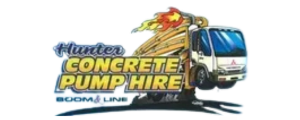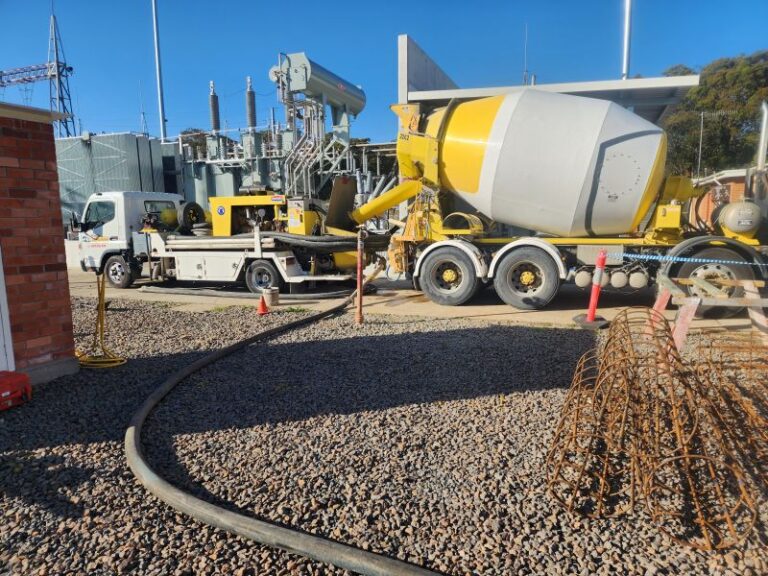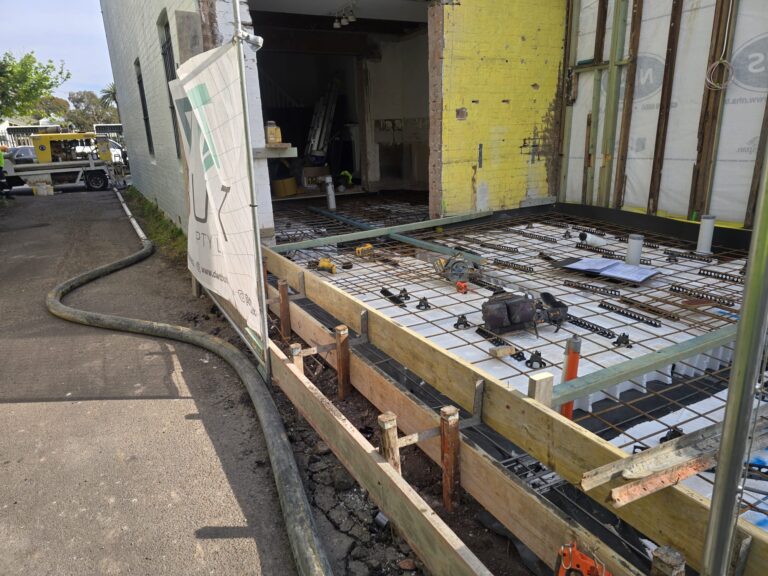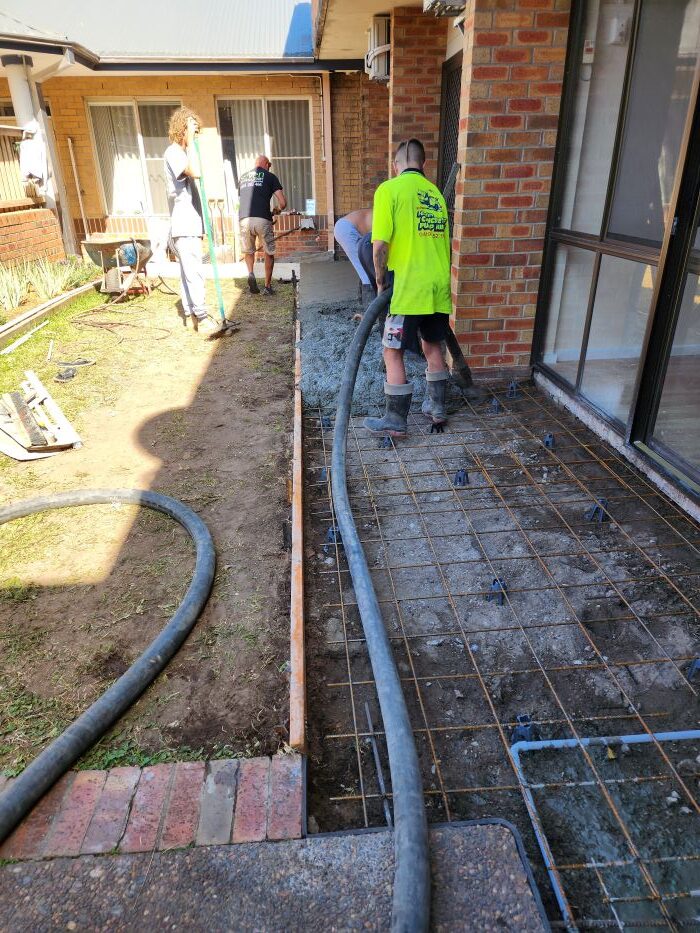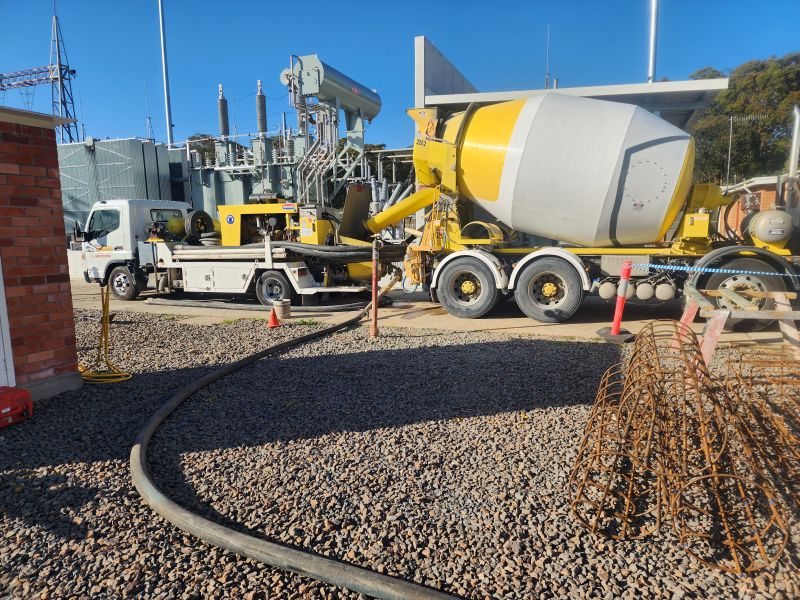
Concrete Pumping Best Practices
Concrete pumping safety in 2025 focuses on training, equipment checks, exclusion zones, and pre-start planning. Knowing the risks and following protocols prevents injury and keeps the job on track.
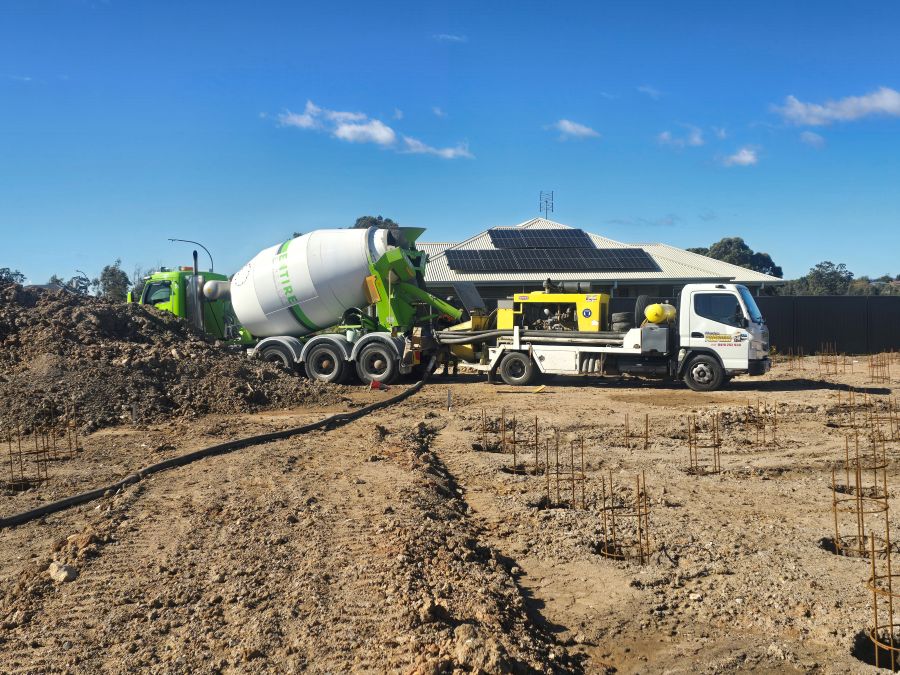
Common Hazards When Operating Concrete Pumps
According to SafeWork NSW, concrete placement workers may face serious risks when setting up or operating concrete pumps. These include:
- Unstable ground or poor setup on sloped surfaces
- Using equipment outside of its design specs
- Overhead power line contact
- Collisions with trucks, structures, or site personnel
- Hose whip and line surges
- Sudden equipment failure and blockages
- Exposure to crush zones, diesel fumes, and excessive noise
- Slip, trip, and confined space hazards
These aren’t theoretical risks. They happen when safety is skipped or protocols aren’t enforced. That’s why we focus on what matters most on-site.
1. Crew Must Be Trained and Ticketed
Concrete pumps are high-pressure machines with strict handling requirements. In NSW, operators must have:
- An HR licence (for boom trucks)
- Verified VOCs (Verification of Competency)
- Training in hazard recognition and emergency stops
Hose handlers should be briefed to avoid standing in discharge zones and to recognise blockages early.
2. Exclusion Zones Save Lives
Concrete under pressure moves fast and violently if released suddenly.
That’s why clearly marked safety zones around the hose and boom are mandatory.
- Barriers and flagging used to mark risk areas
- No standing in front of the discharge
- No walking under booms
3. Gear Gets Checked Before Every Pour
Each job starts with a full equipment inspection. At Hunter Concrete Pumps, we inspect:
- Hoses and reducers
- Couplings and clamps
- Boom integrity and seals
- Primer levels
- Emergency shutoff systems
Nothing starts unless the pump passes every check.
4. One Crew Member Runs the Show
Communication is non-negotiable. Every crew needs one lead operator calling the pour. They coordinate with:
- Agitator drivers
- Hose handlers
- Site supervisors
- Concreters and finishers
That chain of command avoids mistakes and misfires.
5. Every Pour Starts With a Safety Brief
Before the pump fires up, the crew covers:
- Site access and hose routing
- Emergency plans and first aid
- Truck staging and washout
- Slip risks and PPE
- Spotter roles (where needed)
Hunter Concrete Pumps delivers every job with these protocols in place — no exceptions.
Why This Matters
Safe pours don’t just protect your crew, they protect your schedule, your budget, and your name.
A safety slip causes injury, site shutdowns, or a regulator on your case. That’s not a risk worth taking.
We follow SafeWork NSW concrete pump guidelines on every job. Our operators are trained, licensed, and insured. When you book us, the system is built in.
Do I need to supply spotters or safety personnel for my pour?
For civil and commercial sites, yes. For residential, our pump crews manage the safety zone. We’ll let you know what’s required when we quote.
What are the most common safety risks on pumping jobs?
The big three: untrained hose handling, poor access planning, and no exclusion zones. We fix all three before the pour begins.
Get Your Concrete Pours Done Smoothly
Pumping safely isn’t about red tape,it’s about finishing the job without injury or delay.
When your team knows the rules and your operator comes prepared, the pour runs smooth, fast, and drama-free.
Our Services
Get A Free Quote
Contact us today for a free, no-obligation quote on your concrete pumping needs.
